
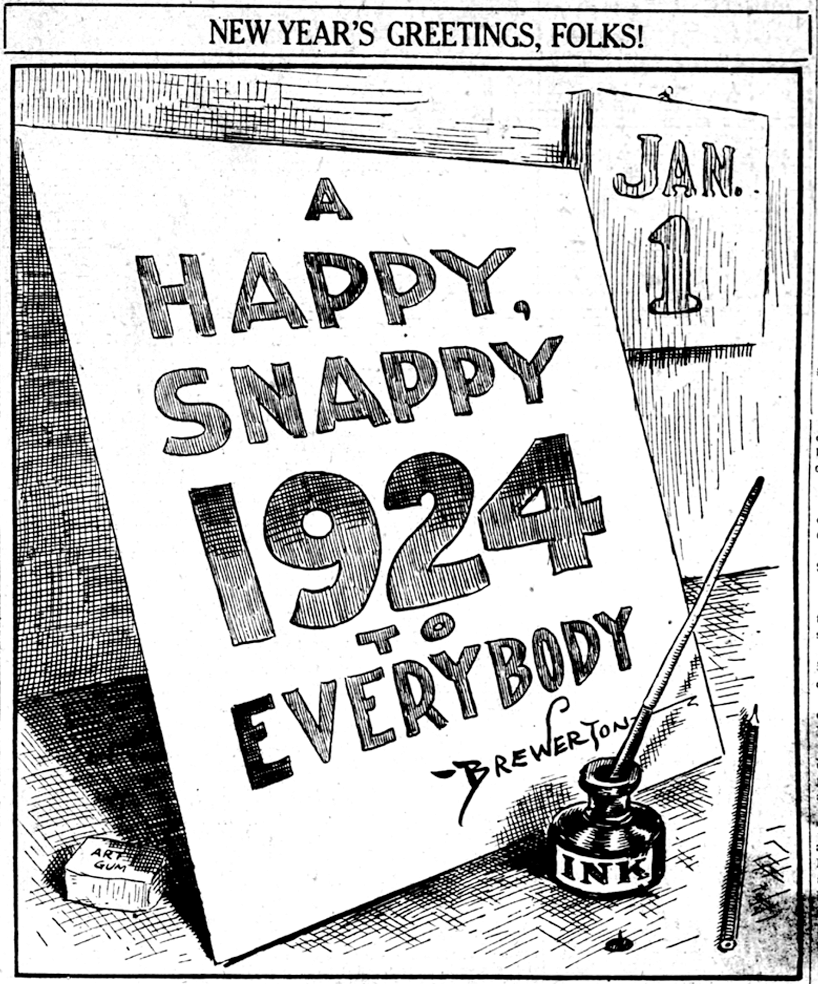
New Year’s cartoons are a mandatory piece each January 1, and Alfred Brewerton didn’t try for anything breakthrough with this 1924 greeting for readers of the Atlanta Journal. I suppose that might strike some people as lazy, but I prefer to see it as an example of restraint, while the amount of detail — achieved with those displayed tools — suggests that he spent some time on it.
And speaking of detail, I’ve loaded today’s cartoons into my Embiggenator for anyone who wants to blow them up slightly for a closer look, but don’t go yet. I’ll add the link at the bottom.
Speaking of not doing anything breakthrough, I simply went back a century, but that landed me in such a land of milk and honey for cartooning that today will be the first of a two-parter. We’ll deal with strips tomorrow.
What giants I have been wandering amongst!
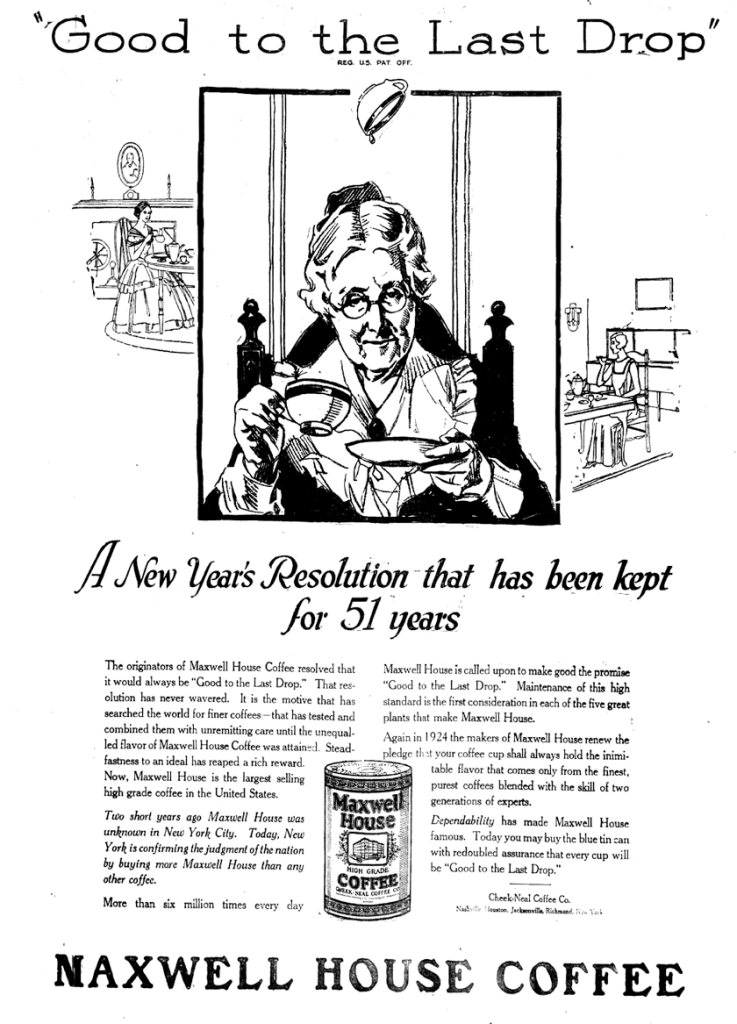
So grab a second cup of coffee, and make it something that’s good to the last drop.
I’m impressed that Maxwell House has used that slogan for at least a century and perhaps a century and a half. It’s a good slogan, but I’m mostly impressed that no genius came along and told them they had to change it into something more up-to-date. Or at least, if he did, nobody listened.
I’d also point out that, while they used a Little Old Lady as the faithful customer who has enjoyed their coffee since the start, they have young women around her, one with a spinning wheel epitomizing their early customers, and one with bobbed hair and modern dress for their current ones.
Given that Modern Advertising was not quite 20 years old, it’s clear that someone at the Cheek-Neal Coffee Company was paying attention. That link may tell you more than you wanted to know about Earnest Elmo Calkins, but as someone who has worked in advertising and owns a first edition of his book, I find it fascinating.

And compare the Maxwell House ad with this far more old-fashioned promotion for a patent medicine. I note that while the ad boasts of its ability to cure a cold, the label, and everything I’ve found about Aspironal, describes it as a laxative.
Which I guess means it won’t cure your cold, but it’ll make you think twice before sneezing.
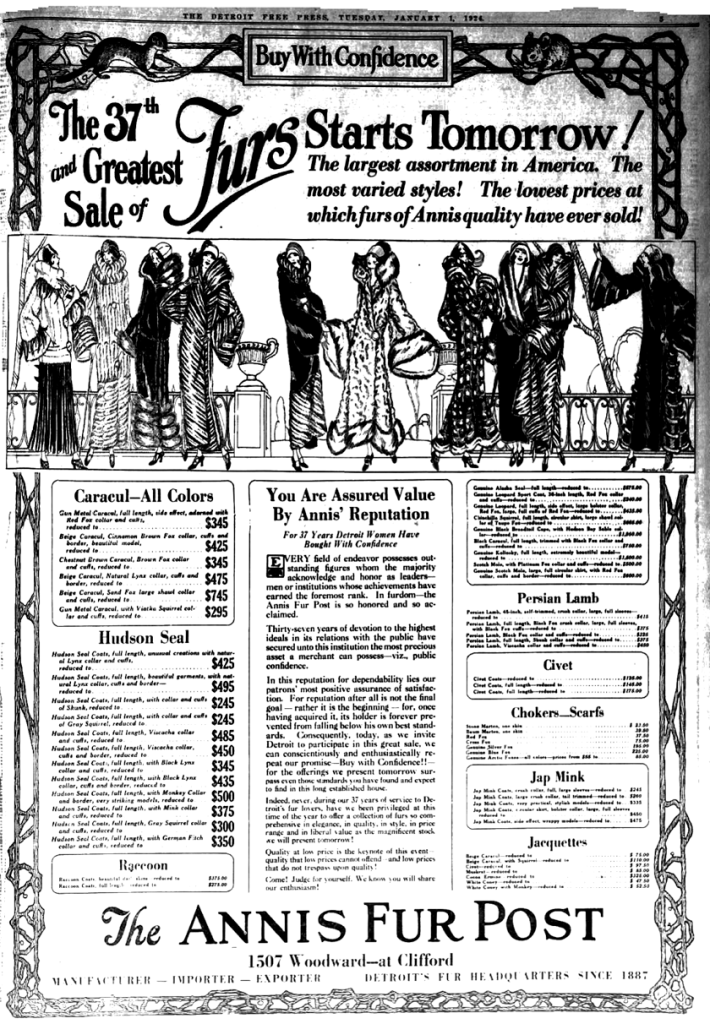
One more ad, and I don’t expect you to be able to read much detail even with the help of the Embiggenator, both because of the small print and the unclear reproduction. But I thought the mass of available furs was striking.
You see women in fur coats in ’20s films and photos, and raccoon coats were a cliche on college campuses of the time, but this ad from the Detroit Free Press is quite an indicator of how many animals ended up on the backs, or draped around the necks, of stylish women, and not just there.
A lot of furs were farmed, but it still seems astonishing that we’ve got any wild animals left at all.
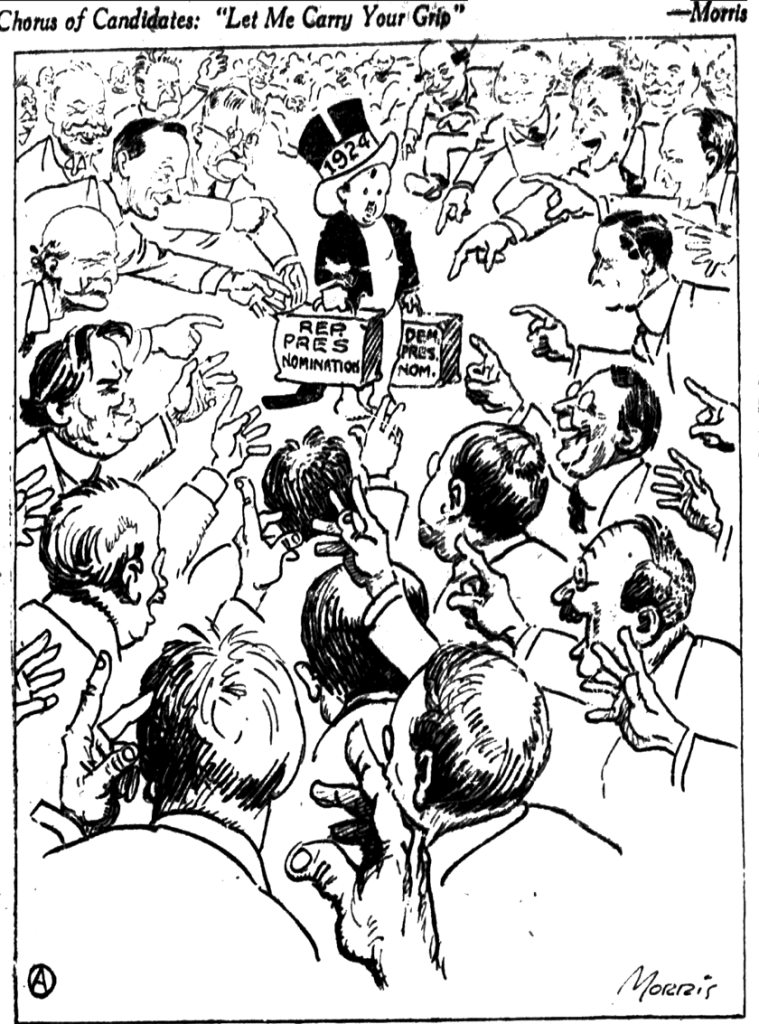
William Morris began the election year with the New Year’s baby being besieged by eager applicants for the presidential nomination of their respective parties. In the end, the elections were something of an anticlimax, with Coolidge winning easily over a divided Democratic Party, having succeeded to the White House on Harding’s death.
Times were good, but Teapot Dome was very much in the news, having surfaced somewhat before Harding’s death, but somehow Coolidge didn’t seem to be blamed for the scandal, which would send the Secretary of the Interior to prison and provide a SCOTUS ruling confirming that Congress has the right to compel testimony.
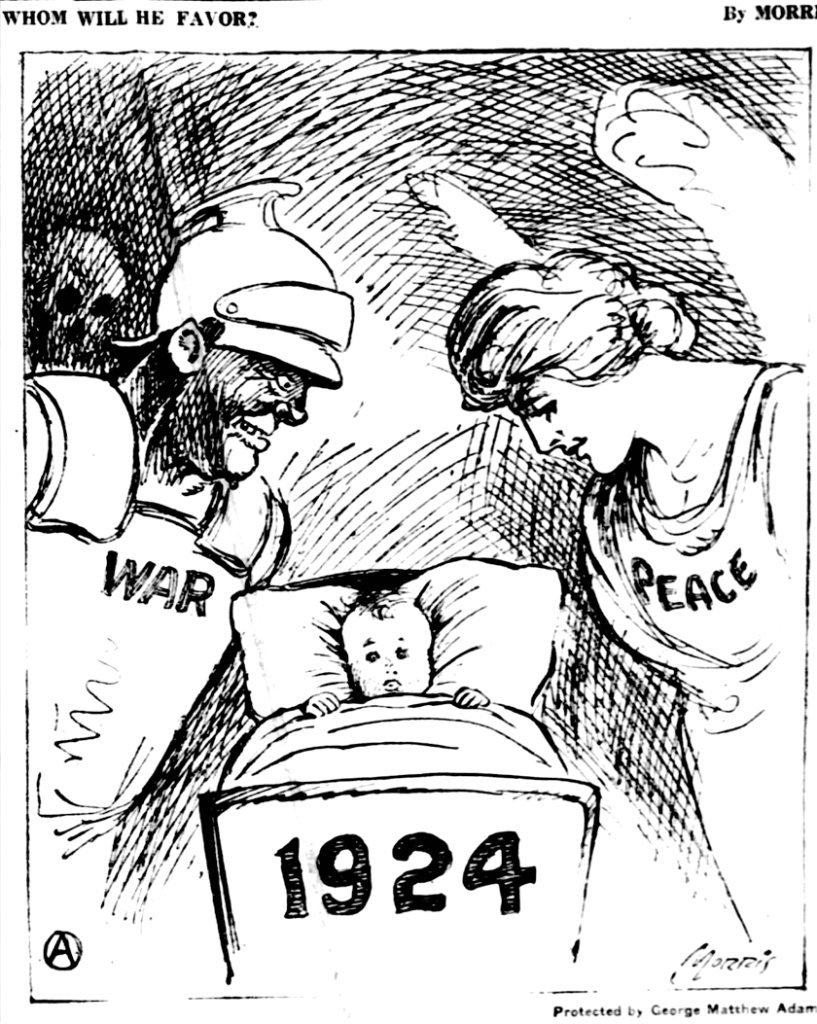
For newspapers that wanted something a little more traditional on New Years, Morris furnished this piece.
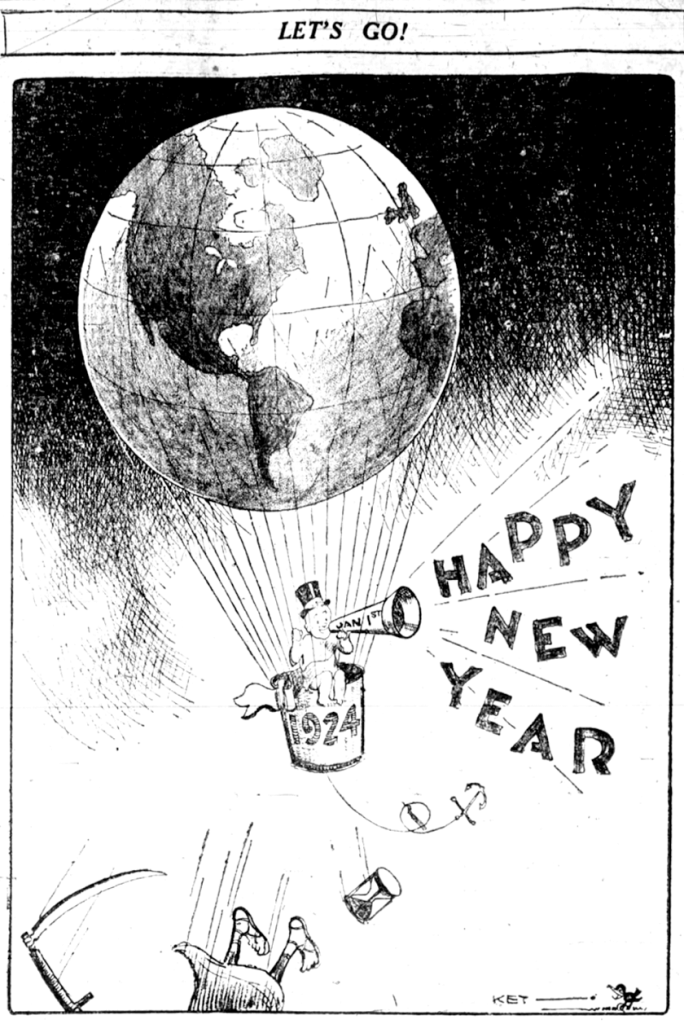
Frank Kettlewell didn’t dwell on the year ahead except to project optimism, as the old year is gone and the baby has lifted anchor and set out for the future.

Dorman Smith is more specific about 1924’s agenda, including the long promised bonus for WWI veterans and the rebuilding of postwar Europe, plus the election campaign and a goal of continued prosperity with lower taxes.
Given the size of the load, that’s one optimistic baby!

Ding Darling also foresaw a busy agenda, and his baby New Year, while also confident, seems even more determined to see it all through, despite the panic of the public over the path ahead.
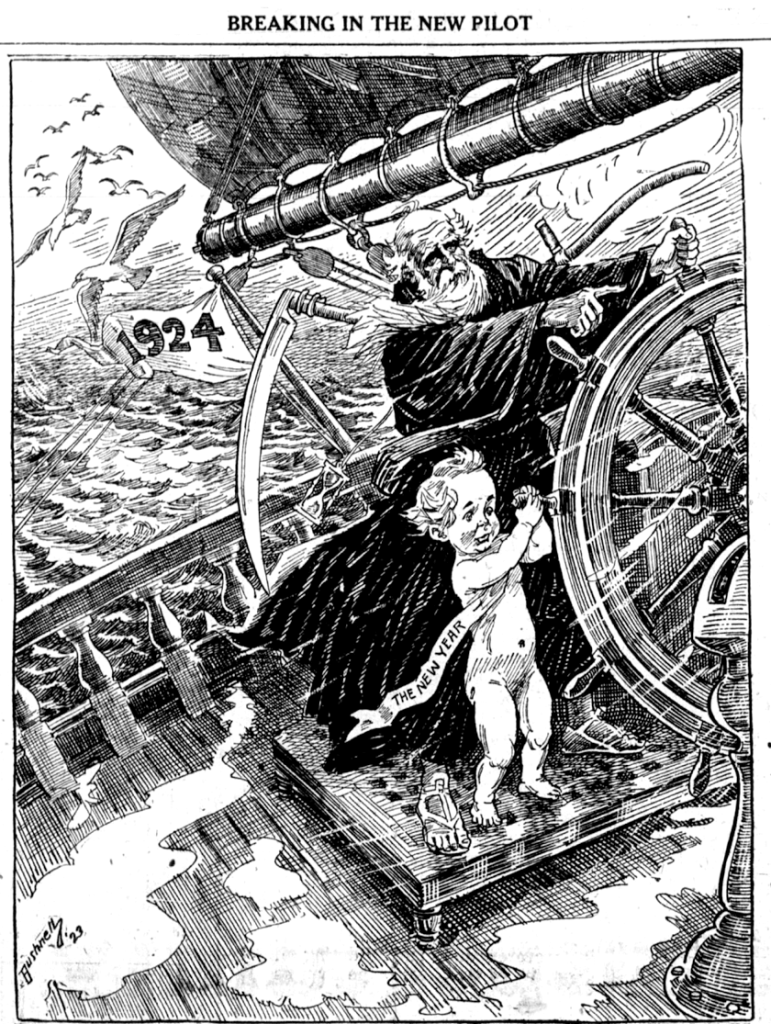
E.A. Bushnell suggests that the old year has some wisdom to impart upon the new before giving up the wheel entirely.
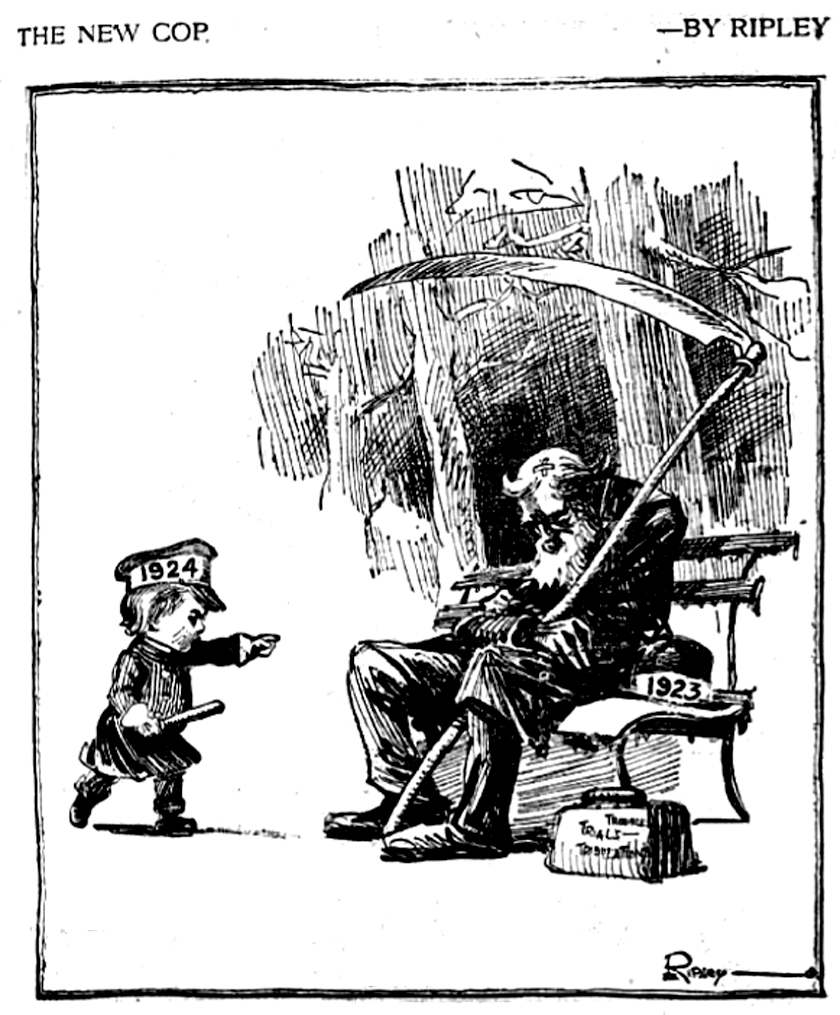
By contrast, Robert Ripley sees the new year as a chance to roust the old, burned-out year and get things moving.
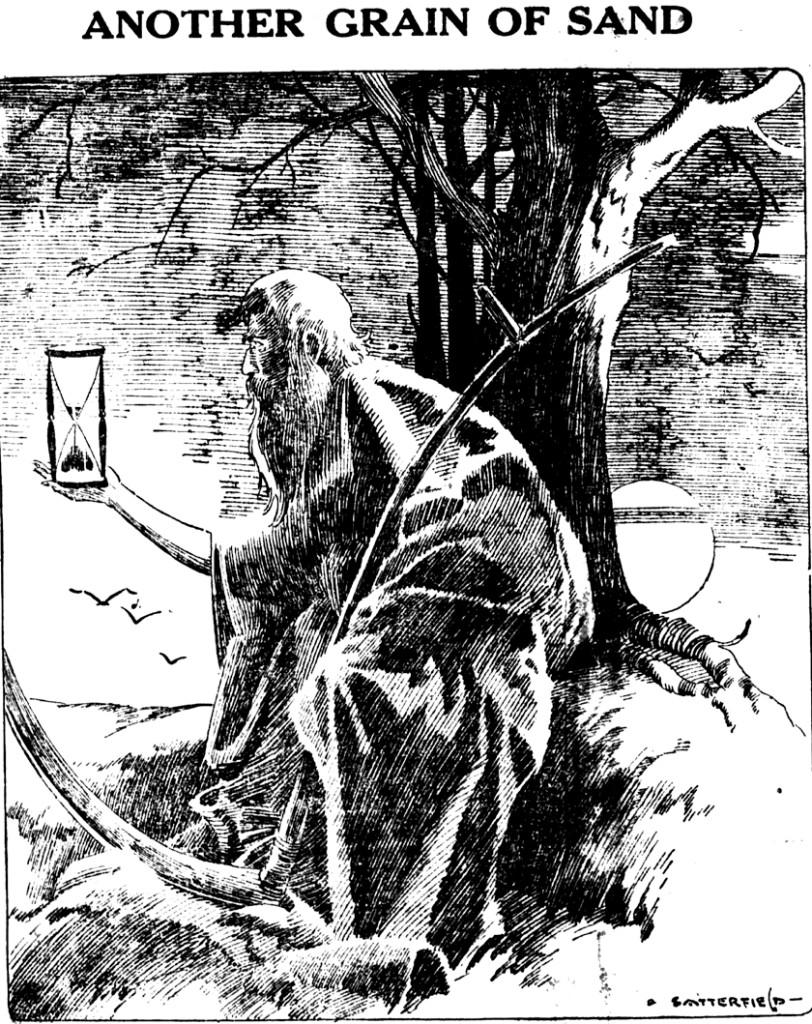
And I suppose you could call Bob Satterfield’s cartoon “thoughtful,” though “depressing” also comes to mind. Satterfield usually employed a light touch but whether he’s just watching the final sands of 1923 play out or foreseeing something more morose than that, this is a far cry from his usual.

It’s important to note that cartoon commentary was not confined to the editorial pages. Cartoons and illustrations popped up everywhere, and were particularly popular on the sports page.
Johnny Walbridge produced this New Year’s look at local sports for the Oakland Post Enquirer. Not sure how long he stuck around the Bay Area, but at some point he moved south and signed on with some guy named Disney, where he worked on a few movies.
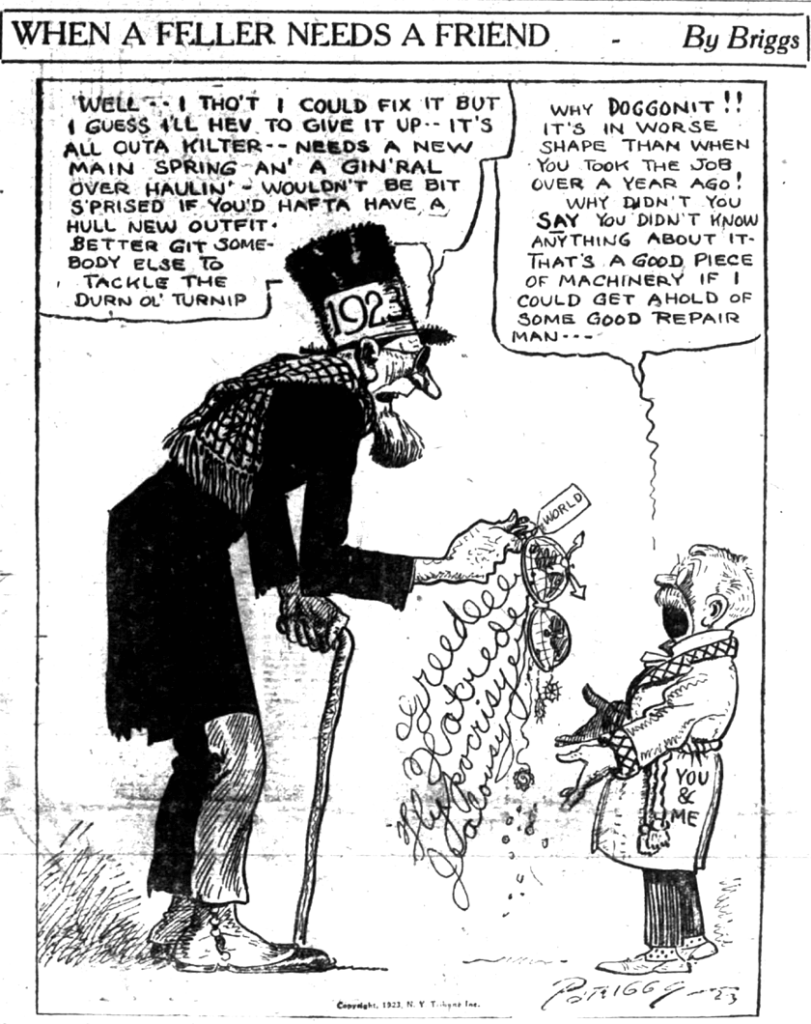
Clare Briggs was more a social commentator than a political cartoonist, and “When A Feller Needs A Friend” was a major success, usually dealing with kids. But this New Year’s piece shows his ability to bring humor to a larger topic. The broken watch springs spell out 1923’s shortcomings as “You & Me” hope for better from 1924.
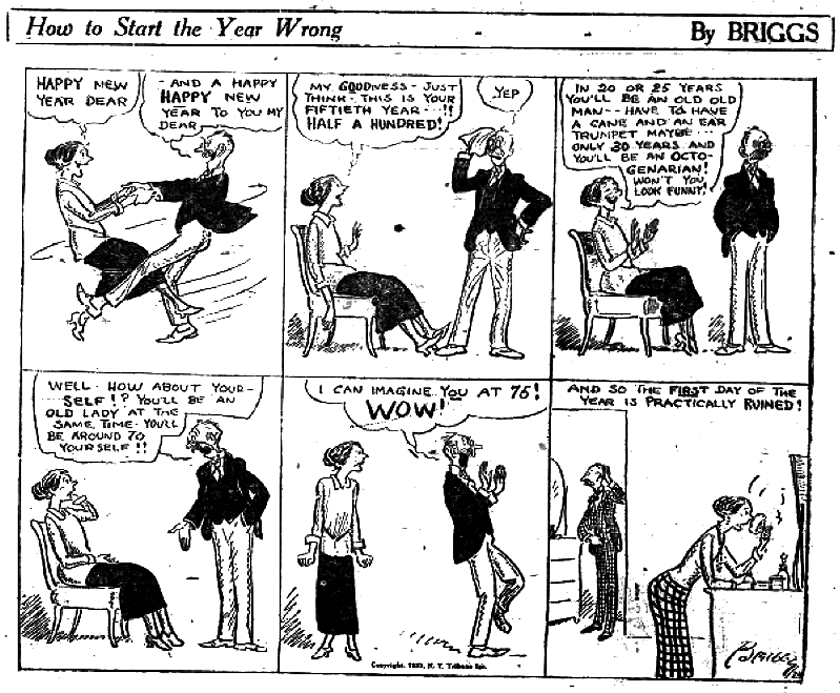
This is more typical of Briggs’ social commentary, beyond barefoot kids at play.
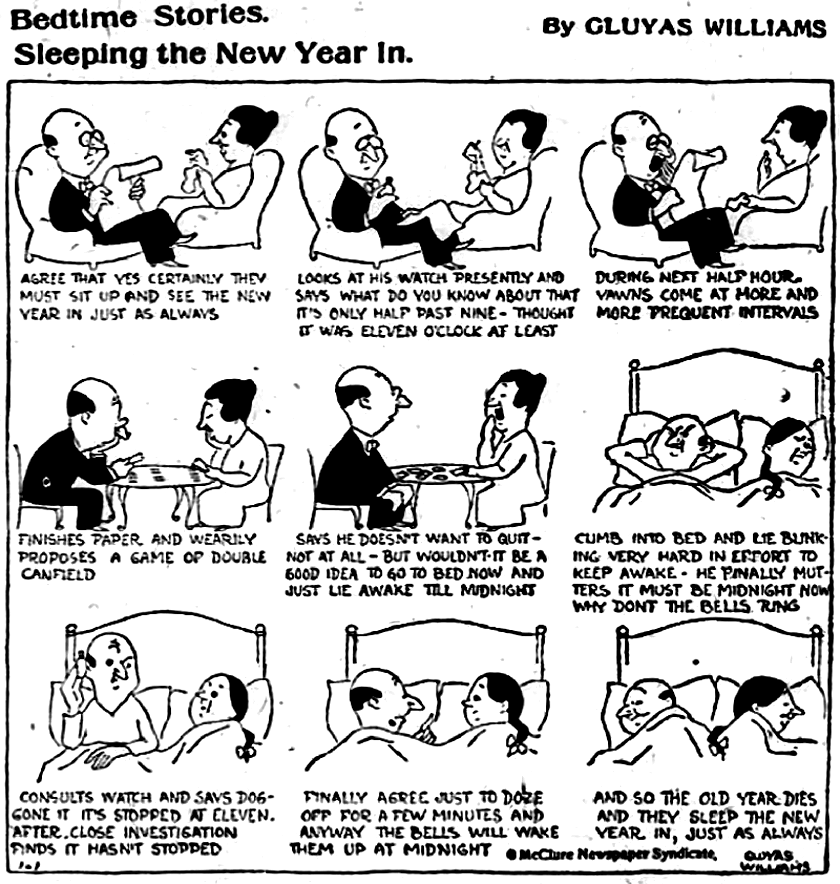
Gluyas Williams also contributed this sort of domestic humor on a regular basis, confirming in this case that sleeping through the New Year is hardly a new gag, but can be done well.
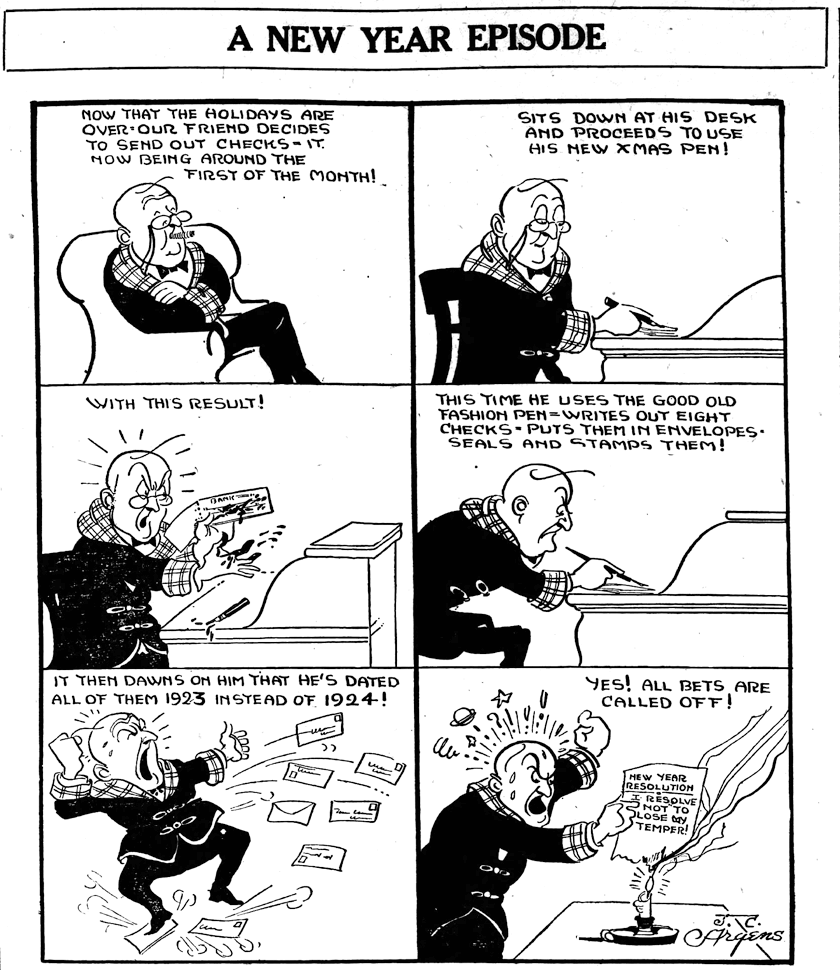
Tomorrow’s collection of strips will confirm that a resolution not to lose your temper was common, as seen in this J.C. Argens cartoon, perhaps because so many comic strips revolved around irascible men relentlessly pounded by fate or, in this case, leaky fountain pens and his own absent-mindedness.
If you want a closer look at any of these, here’s your link.
And come back tomorrow for a look at the New Year’s 1924 comic strips!
Now here’s one of the top songs of 1924 and a little more artwork.
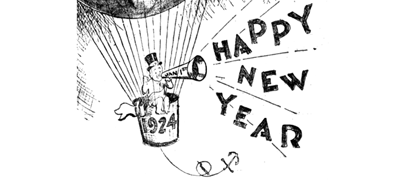
Doesn’t seem to bother the Little Old Lady at all to be sitting under the Drop of Damocles.
And if Aspironal was a laxative I rather think America’s druggists sweated out those two minutes, hoping to give a refund rather than having to cleaning the floor.
The Albany fur article was a good read. Glad I gave the rather understated link a try.
When I was in high school (Class of ’67), I had several friends who ran traplines, but I don’t know that anyone bothers anymore. Good example of the market no longer making it worthwhile. And there are plenty of “Fox Farm Roads” on the map, but I don’t think many of them still have fox farms. AFAIK, the fur trade is largely for Russia and Canada these days, not the US.
First, a sincere thanks, Mike, for all the funny and important contributions you made in 2023.
Second, a strong laxative administered to the maniacs in society might improve things for us all.
Then, to get it right: Bette Davis said – “Fasten your seatbelts, it’s going to be a bumpy night.”
But, (to mis-use the popular mis-quote) I’m sure the entire coming year will be a VERY bumpy ride.
Brace yourselves, everyone. I hope we can hold most of the chaos at bay and have some honesty, health and kindness in 2024.
I’m pretty sure that’s Franklin Delano Roosevelt at the right side of the Morris cartoon.
I really enjoyed the Argens cartoon, I’ve not seen his work before.
Happy 2024 to you and all!
The guy whose mouth is missing in this scan? FDR is possible, but I think it’s more likely to be William McAdoo, Woodrow Wilson’s son-in-law and a front runner for the Democratic nomination.